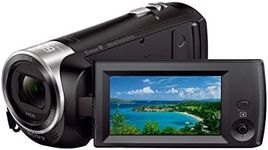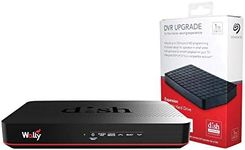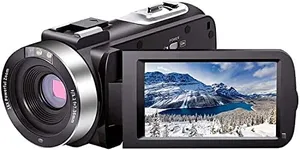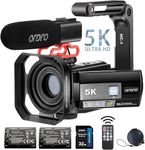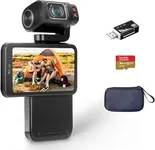Buying Guide for the Best Digital Video Recorders
Choosing the right digital video recorder (DVR) can significantly enhance your video recording and playback experience. Whether you're looking to record TV shows, monitor security footage, or capture live events, understanding the key specifications will help you make an informed decision. Here are the essential specs to consider when selecting a DVR and how to determine which one is the best fit for your needs.Storage CapacityStorage capacity refers to the amount of data your DVR can hold. This is important because it determines how much video footage you can store before needing to delete or transfer files. Storage is typically measured in gigabytes (GB) or terabytes (TB). For light use, such as recording a few TV shows, a DVR with 500GB to 1TB may suffice. For more extensive use, like continuous security monitoring, consider a DVR with 2TB or more. Assess your recording habits and the resolution of the videos you plan to store to choose the right capacity.
Number of ChannelsThe number of channels indicates how many video feeds the DVR can record simultaneously. This is crucial for security systems or setups where multiple cameras are used. DVRs typically range from 4 to 32 channels. For a small home security system, 4 to 8 channels might be enough. For larger properties or businesses, you may need 16 channels or more. Consider the number of cameras you plan to use and whether you might expand your system in the future.
ResolutionResolution refers to the clarity and detail of the recorded video. Higher resolution provides clearer and more detailed images, which is especially important for security footage. Common resolutions include 720p, 1080p, and 4K. For general TV recording, 720p or 1080p is usually sufficient. For security purposes, especially in areas where detail is critical, 1080p or 4K is recommended. Choose a resolution that matches your viewing needs and the capabilities of your display devices.
Compression TechnologyCompression technology affects how video data is stored and transmitted, impacting both storage efficiency and video quality. Common compression formats include H.264 and H.265. H.265 offers better compression, meaning it can store higher quality video in less space compared to H.264. If you need to maximize storage space without sacrificing video quality, look for a DVR that supports H.265 compression. This is particularly useful for long-term storage and high-resolution recordings.
Remote AccessRemote access allows you to view and manage your DVR recordings from a smartphone, tablet, or computer. This feature is important for convenience and security, as it lets you monitor live feeds and playback recordings from anywhere. DVRs with remote access typically come with dedicated apps or web interfaces. If you need to keep an eye on your property while away or want the flexibility to manage recordings remotely, ensure the DVR supports remote access and check the compatibility with your devices.
Recording ModesRecording modes determine how and when the DVR records video. Common modes include continuous recording, scheduled recording, and motion detection recording. Continuous recording captures video non-stop, which is ideal for high-security areas. Scheduled recording allows you to set specific times for recording, useful for TV shows or events. Motion detection recording saves storage by only recording when movement is detected, suitable for security purposes. Choose a DVR with recording modes that align with your specific needs and usage patterns.
